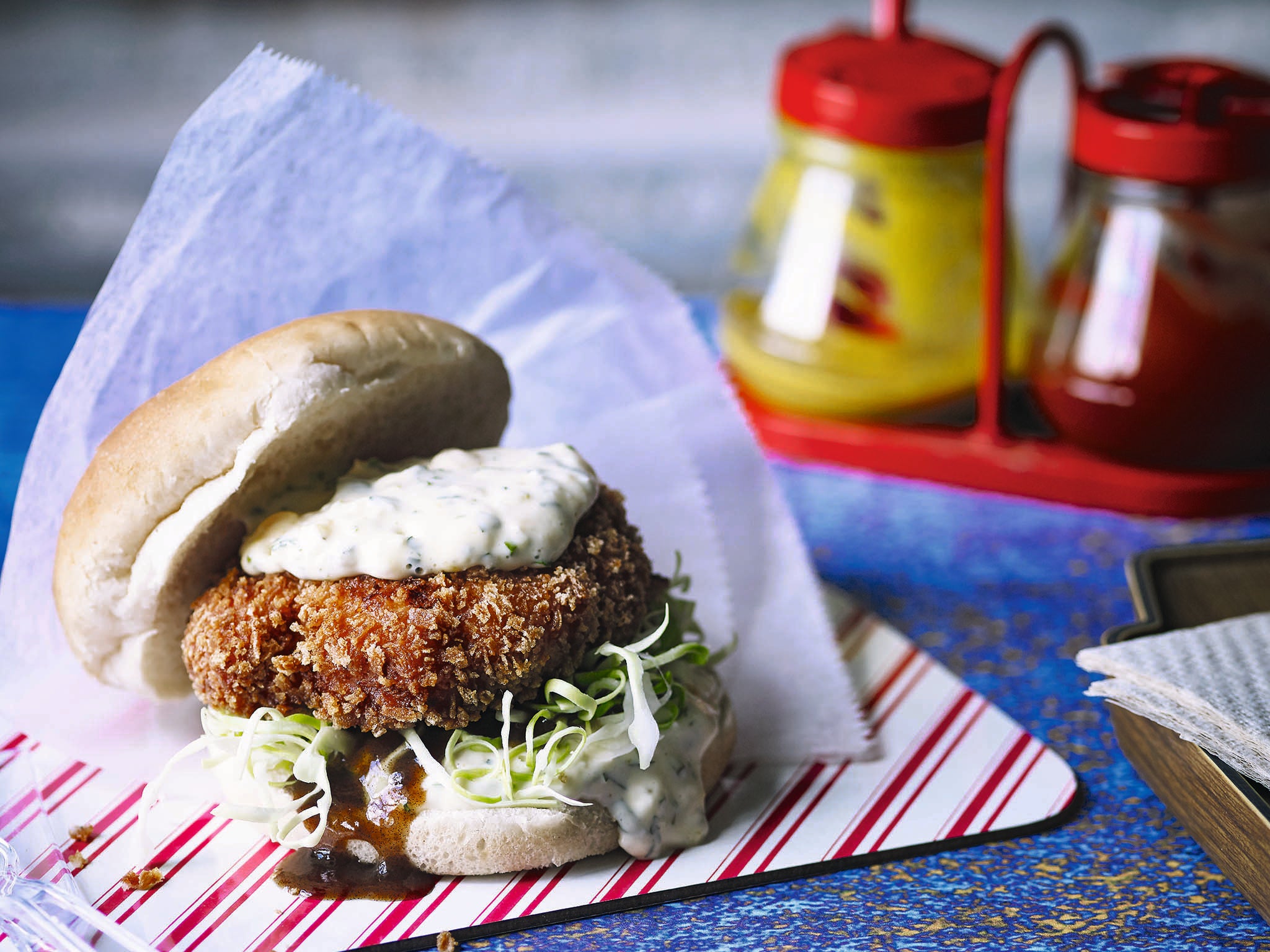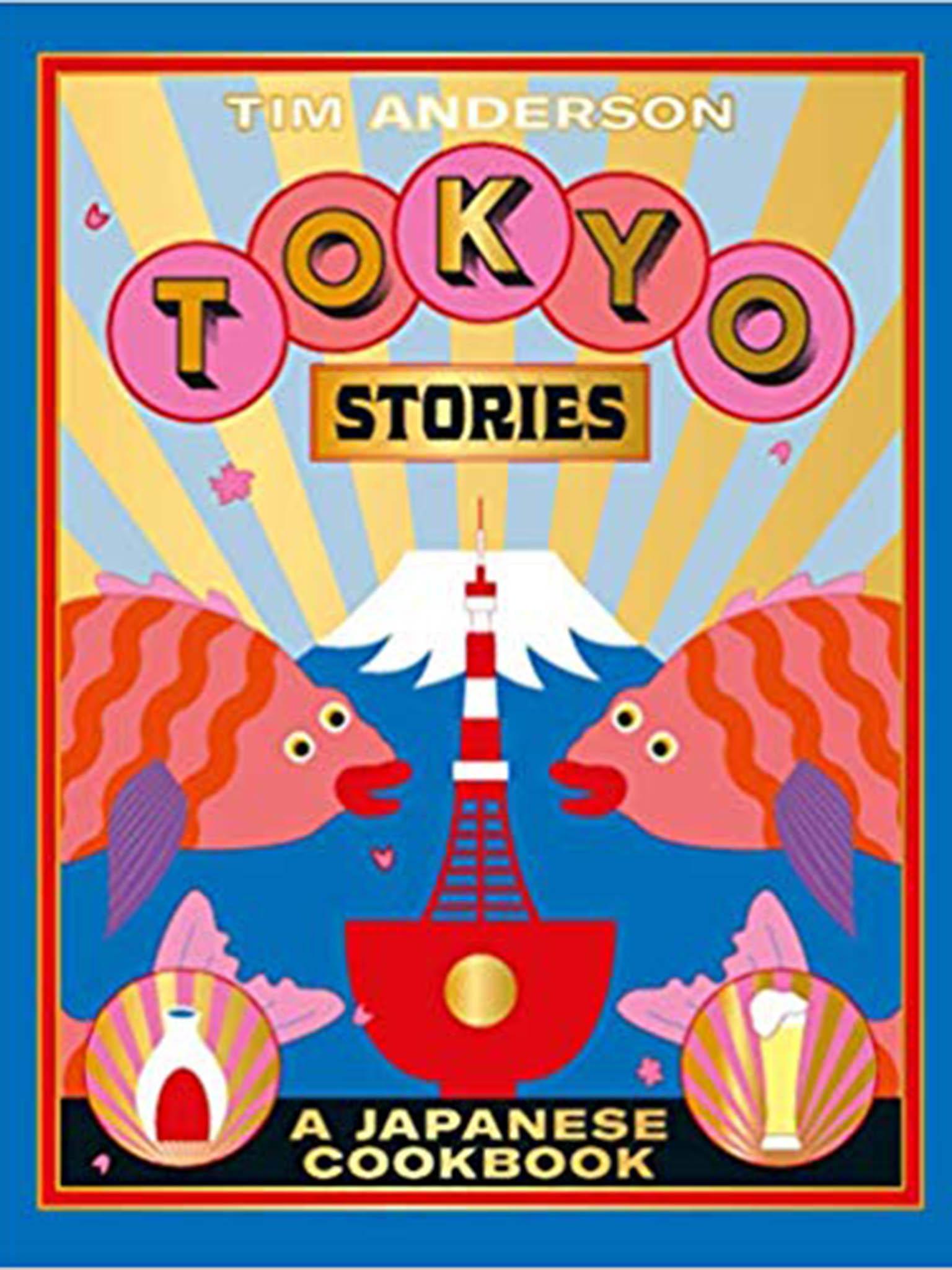‘Tokyo Stories’ cookbook: Recipes from to uni linguini to ebikatsu burger
Tim Anderson takes readers on a tour of the Japanese capital with his book which incorporates everything from luxurious restaurant-style dishes to street food to Tokyoite takes on classics from around the globe

Your support helps us to tell the story
From reproductive rights to climate change to Big Tech, The Independent is on the ground when the story is developing. Whether it's investigating the financials of Elon Musk's pro-Trump PAC or producing our latest documentary, 'The A Word', which shines a light on the American women fighting for reproductive rights, we know how important it is to parse out the facts from the messaging.
At such a critical moment in US history, we need reporters on the ground. Your donation allows us to keep sending journalists to speak to both sides of the story.
The Independent is trusted by Americans across the entire political spectrum. And unlike many other quality news outlets, we choose not to lock Americans out of our reporting and analysis with paywalls. We believe quality journalism should be available to everyone, paid for by those who can afford it.
Your support makes all the difference.Hiroshima-style okonomiyaki – layered pancake of noodles and vegetables
Okonomiyaki, the savoury pancake filled with ingredients of the customer’s choosing, is mostly associated with Osaka, to the endless ire of people from Hiroshima, who have their own unique style of okonomiyaki. The Hiroshima style is sometimes called Hiroshima-yaki to differentiate it, but nothing annoys Hiroshimaites more than this, as in their view, it’s the Osaka style that is the inferior knock-off version. I’m not going to get involved in this rivalry, but I will say that Hiroshima okonomiyaki is indeed delicious, especially if you love noodles, like I do. In fact, it’s more like layered yakisoba, with noodles, cabbage and toppings griddled separately from the pancake, which takes the form of a thin crepe that gets draped over everything else. I do like the Osaka style, but it does dominate the okonomiyaki scene in Tokyo, and indeed all of Japan, and the world. So I especially like Hiroshima-style because it’s a bit of an okonomiyaki underdog. This recipe includes sweetcorn, bacon and squid – one of my favourite combinations – but you can leave them out, or add all kinds of other things. You’ll need a griddle to make Hiroshima okonomiyaki.
Makes 2 okonomiyaki, which is actually likely to be enough for 4 people
100g plain (all-purpose) flour
120ml dashi
3 eggs
½ hispi or flat cabbage, finely chopped
100g bean sprouts
150-200g tin of sweetcorn, drained
4 spring onions (scallions), thinly sliced
About 40g beni shoga
Vegetable oil
6 rashers streaky bacon
200g prepared squid, scored and cut into 1cm strips
2 portions fresh yakisoba/egg noodles (or dried noodles, parboiled)
About 150ml okonomi sauce
Kewpie mayo, as needed
A few pinches of aonori
A few pinches of sesame seeds
Handful of katsuobushi
Whisk together the flour, dashi and 1 egg to form a thin batter. In a separate bowl, toss together the cabbage, bean sprouts, sweetcorn, half of the spring onions and half of the beni shoga. Set the griddle on medium-high heat and add a little oil, spreading it out into a thin layer with a spatula. Use a ladle to pour out 2 pancakes on the griddle, reserving about a third of the batter in the bowl. Top each pancake with the cabbage mixture, then drizzle the remaining batter of the top of each cabbage pile. Press down on the cabbage pile to flatten it slightly, and cook for about 5 minutes. Top each cabbage pile with 3 rashers of bacon, pressing them down, then deftly flip each pile so the bacon is on the bottom and the pancake is on top. Press everything down again.
Stir-fry the squid in a separate space on the griddle and add the noodles on top of the squid. Toss them together with about a third of the okonomi sauce, then gather them into a circle the same diameter as each pancake. Transfer the pancake-cabbage pile to the top of each circle of noodles and cook for another 5 minutes or so (the noodles should be nice and crisp on the bottom). Meanwhile, fry 2 eggs on the griddle – typically the yolk is broken, but I do like a runny yolk on my okonomiyaki. When the eggs are cooked, transfer them to the top of each okonomiyaki, then cover in okonomi sauce, mayo, aonori, sesame seeds, the remaining beni shoga and spring onions and katsuobushi. Enjoy straight from the griddle, if possible.

Uni linguini – sea urchin linguini
The timeline of Tokyo history is one long noodle. Soba and udon have been enjoyed here for at least 400 years, and other forms of Tokyo noodlecraft date back to as early as the eighth century. But traditional Japanese noodles aren’t the only ones you’re likely to encounter in Tokyo. Far from it. In fact,
Tokyoites’ love for noodles is fairly indiscriminate, and you’ll find varieties from all over the world here, including, of course, Italian pasta. Japan’s love affair with pasta began at the time of the Second World War, when a number of factors ushered the exotic dish into Japanese kitchens. European cuisine in general became fashionable around the 1920s, and by the 1940s, spaghetti appeared in many high-end western restaurants around Tokyo and Yokohama. Just like Japanese curry, Japanese pasta mutated into something quite distinct from the original source material, often incorporating odd local flavours.
Perhaps the most famous Japanese pasta dish is “spaghetti Napolitan”, a preparation inspired by American military rations that features ketchup and frankfurters as two of its primary ingredients (don’t tell me you haven’t eaten something similar when you were a student).
As Japanese pasta has evolved over the decades, it’s become very much its own thing, different from what you’d find in Italy but nonetheless extremely delicious. One of the most common flavourings for pasta in Japan is various types of seafood roe or other innards, such as the spicy cod roe called mentaiko, or dark crab meat. But the creme de la creme of Japanese sea creature-based pasta dishes is uni pasta, made from ripe, briny sea urchin. The iodine-rich, concentrated shellfish flavour combines beautifully with supple pasta, and the flavour to me is both 100 per cent Japanese and 100 per cent Italian.
Serves 4
150g sea urchin roe (fresh or frozen)
50g dark crab meat
Juice of ¼ lemon
100g butter, melted
Salt, to taste
400g dried linguini
Pinch of shichimi togarashi
20g parmesan, grated
12g chives, finely chopped
40g salmon roe
A few leaves fresh dill or basil, torn
Whisk or blend together the sea urchin, crab meat and lemon juice. Whisk in the melted butter, a little at a time, as if you were making a mayonnaise or hollandaise. Season with salt, taste and adjust as necessary.
Cook the pasta in boiling salted water until al dente, then drain and return to the pan, reserving a little of the pasta water. Leave to cool for a minute or two – if you add the sauce when it’s too hot, the emulsion will break.
Stir in the sauce, adding a little bit of the pasta water to slacken the sauce, if needed. Divide among 4 bowls and top with a tiny bit of shichimi, then the parmesan, chives, salmon roe and dill or basil.

Ebikatsu burger – breaded prawn patty burger
My first trip to Tokyo was back in 2002, on a package holiday that my parents bought me as a high school graduation present. It was an amazing trip, of course, but even for someone who was already a keen Japanophile and very into Japanese food, it was a bit overwhelming at times.
That first night in Shinjuku was so disorientating I can’t remember many details, but I do remember where we eventually went for dinner: a fast-food chain restaurant called First Kitchen, which I think we decided on because they had a picture menu with some English on it. I had taken a two-week Japanese language course so I knew some basics, but of course that was completely useless when confronted with the unforgiving reality of complicated text and native speech – and trying to order food even with the picture menu and a very accommodating and patient cashier to help us was extremely difficult. I wanted a number-three set meal and just kept pointing to what I wanted and saying san (three) – what I didn’t know is that Japanese numbers are given one of dozens of suffixes or modifiers to indicate their meaning. For example, “number three” is sanban, three things is mittsu, three people is sannin, three cups is sanbai, three days is mikka, three small animals is sanbiki, and three guns or palanquins is sancho. So just saying “san” is basically nonsense. But somehow we got there in the end… only to then discover there were follow-up questions about seasoning and condiments. Cue more confusion and futile gesticulation.
I think most people have a similar experience on their first visit to Japan – as hospitable as people are there, it is very tricky to figure things out without knowing the language. But even though it was stressful to order, the food was delicious in the end, and First Kitchen remained a favourite Japanese fast-food chain throughout my time living there. My go-to order was the ebikatsu burger – a breaded and deep-fried prawn patty on a soft bun with shredded cabbage, tonkatsu sauce and tartare sauce. Think Filet-O-Fish, but waaaaay better.
Serves 4
For the katsu
50g firm silken tofu
1 tbsp mayonnaise
¼ small onion, grated
20g cornflour (cornstarch) or potato starch
100g cod, haddock or other white fish
Pinch of salt and white pepper
250g raw prawns (shrimp), shelled and deveined
40g plain (all-purpose) flour
1 egg, beaten with a little water
50g panko
Oil, for shallow or deep frying
For the tartare sauce
40g gherkins, finely diced
10g chives, finely sliced
Juice of ¼ lemon
1 egg, hard-boiled, peeled and mashed
100g mayo
Pinch of MSG
A few tarragon or parsley leaves, coarsely chopped
1 tsp Dijon mustard
To serve
Oil, for shallow frying (at least 2 tbsp)
4 burger buns
¼ hispi cabbage, finely shredded
4 tbsp tonkatsu sauce

To make the katsu, blend the tofu, mayo, onion, starch, fish, salt and pepper in a food processor until it forms a paste. Coarsely mince (grind) the prawns either with a knife or with the food processor (make sure you don’t blend them too much – they should still have plenty of texture). Combine the prawns with the fish paste and divide into 4 portions. Oil your hands and shape each portion into a patty about 1.5 cm (5/8 in) thick. Freeze for at least an hour. Dredge the patties in the flour, then in the egg and then the panko. Refrigerate until needed.
For the tartare sauce, stir everything together until well combined. To serve, heat the oil in a frying pan (skillet) over a medium heat. Fry the ebikatsu on each side for about 4 minutes until golden. Drain on paper towels and construct the burgers: place a spoonful of tartare sauce on the bottom bun, then the cabbage, then the tonkatsu sauce, then the ebikatsu and then more tartare sauce.
‘Tokyo Stories: A Japanese Cookbook’ by Tim Anderson (Hardie Grant, £26). Photography by Nassima Rothacker
Join our commenting forum
Join thought-provoking conversations, follow other Independent readers and see their replies
Comments